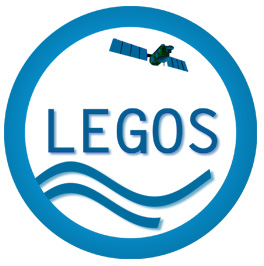Cette thèse a été encadrée
par
Catherine
Jeandel et Pierre Mazzega
au Laboratoire d'Etudes en Géophysique et Océanographie Spatiale

UMR 5566 CNRS/CNES/UPS/IRD
Observatoire Midi-Pyrénées
- 14 avenue Edouard Belin - 31401 Toulouse Cedex 01
|
en biogéochimie marine |
UNE METHODE D'ESTIMATION
PARAMETRIQUE NON-LINEAIRE
POUR MODELISER LES FLUX DE
MATIERE DANS LA COLONNE D'EAU OCEANIQUE
Application à l'Atlantique
tropical nord-est (sites EUMELI)
(A NONLINEAR PARAMETER ESTIMATION METHOD
TO MODEL THE MATERIAL FLUXES THROUGH THE OCEANIC WATER COLUMN
Application to the tropical north-east Atlantic
Ocean (EUMELI sites) )
|
en ligne (HTML) |
|
Cette thèse a été encadrée
par
Catherine
Jeandel et Pierre Mazzega
au Laboratoire d'Etudes en Géophysique et Océanographie Spatiale

UMR 5566 CNRS/CNES/UPS/IRD
Observatoire Midi-Pyrénées
- 14 avenue Edouard Belin - 31401 Toulouse Cedex 01
|
La composition chimique de l’océan
est contrôlée par les apports atmosphériques et fluviatiles
et par des échanges permanents entre les phases dissoute et particulaires.
Ces échanges résultent de couplages non-linéaires
complexes entre des processus physiques, chimiques et biologiques. Nous
proposons une approche pour quantifier ces processus et étudier
leur variabilité en fonction des régimes trophiques. Elle
repose sur l’estimation des paramètres d’un modèle non-linéaire
des flux de matière dans la colonne d’eau à partir des mesures
in situ réalisées en deux sites oligotrophe et mésotrophe
localisés au large de l’upwelling mauritanien.
Mots-clés : modélisation, cycles biogéochimiques, colonne d'eau océanique, traceur géochimique, méthode inverse, assimilation de données, algorithme d'optimisation globale, upwelling mauritanien |
|
The chemical composition of the ocean is
controlled by the atmospheric and river supplies and by permanent exchanges
between the dissolved and particulate phases. These exchanges result from
complex nonlinear couplings between physical, chemical and biological processes.
We propose an approach to quantify these processes and to study their variability
as a function of trophic regimes. It rests on the estimation of the parameters
of a nonlinear model of the material fluxes through the water column with
in situ measurements made at an oligotrophic and a mesotrophic site off
the Mauritanian upwelling.
Keywords: modelization, biogeochemical cycles, oceanic water column, geochemical tracer, inverse method, data assimilation, global optimization algorithm, Mauritanian upwelling |
Date de mise à jour: 23 août 2001 - Copyright août
2001 - Véronique Lefèvre (mailto:lefevre.vero@free.fr)